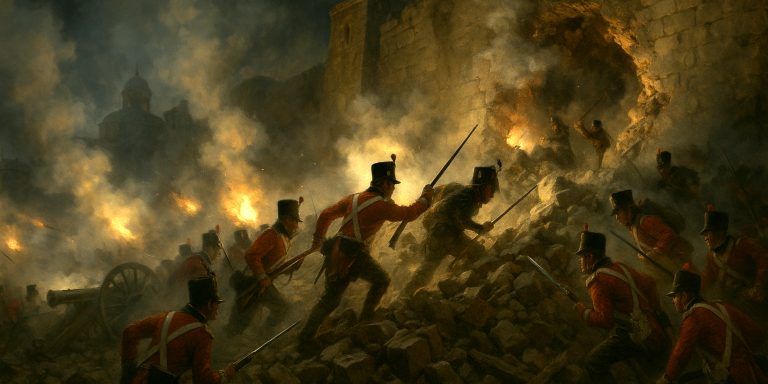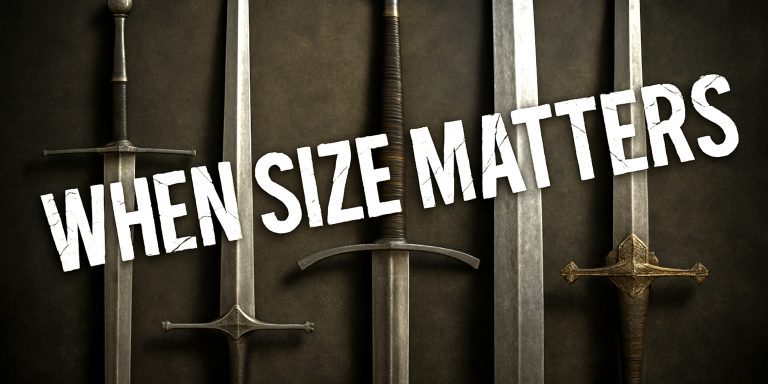
A Complete Guide to the Weapon of Sport, Status and Frontier Utility
The English colonial hunting sword was a short, broad-bladed weapon carried in Britain and across its colonies from the seventeenth to the nineteenth century. Although it served a practical purpose in hunting and self-defence, it also became a symbol of social standing. Officers, wealthy settlers and gentlemen hunters adopted it both as a sidearm and as a marker of refinement. Its design sat halfway between a cutlass and a gentleman’s smallsword, which made it an adaptable companion in frontier environments.
Specifications
These swords varied by region and maker, but certain traits appear consistently.
Typical Measurements
| Feature | Specification |
|---|---|
| Blade Length | 20 to 28 inches |
| Blade Type | Single edged, often with a clipped point or spear point |
| Blade Construction | Stout, slightly curved or straight, built for cutting |
| Hilt Material | Brass, iron, or occasionally silver for presentation pieces |
| Guard Style | Knuckle bow or simple D-guard |
| Grip | Wood or horn, sometimes leather wrapped |
| Scabbard | Leather with brass fittings |
| Weight | Usually 1 to 1.5 kg |
History and Evolution
The hunting sword originated from European hunting hangers, which had been common among aristocratic hunters since the late medieval period. As Britain expanded its colonial reach, the design travelled with officers, administrators and settlers.
Early Development, 1600s
- Used mainly in England for ceremonial hunts.
- Frequently decorated with engravings of game animals.
- Blades often imported from Solingen or Toledo.
Expansion across the Colonies, 1700s
- Adopted widely in North America, the Caribbean and India.
- Became a practical frontier weapon that doubled as a tool for clearing brush and processing game.
- Officers in colonial militias carried them as secondary sidearms.
Late Use and Decline, 1800s
- Gradual replacement by sabres and light infantry swords.
- Continued as a gentleman’s accessory rather than a battlefield weapon.
- Eventually phased out as rifles and pistols gained prominence.
Advantages and Disadvantages
Advantages
- Short length made it easy to carry while travelling through forests or rough ground.
- Thick, sturdy blade handled both hunting tasks and combat situations.
- Simple construction kept it reliable in harsh climates.
- Retained status value among colonial elites.
Disadvantages
- Limited reach compared to military sabres.
- Cutting power sometimes restricted by relatively light blades.
- Not suited to thrust-focused fencing styles.
- Lost relevance as firearms became more efficient.
Comparison with Similar Weapons
| Weapon | Strengths | Weaknesses | Notes |
|---|---|---|---|
| English Colonial Hunting Sword | Compact, versatile, sturdy | Short reach, limited thrust | Balanced tool for hunting and frontier life |
| Cutlass | Strong cutting power, robust | Crude handling | Favoured by sailors and marines |
| Smallsword | Lightweight, excellent for thrusting | Poor cutting ability | Carried for dress and duelling |
| Naval Dirk | Easy to carry, good in tight quarters | Very short blade | Common in naval contexts |
| French Hanger | Strong cutter with similar purpose | Slightly heavier | Direct European counterpart |
Legacy
The hunting sword left a durable mark on both colonial culture and weapon design. It appears frequently in portraits of officers and administrators, suggesting its dual role as a practical tool and a subtle declaration of status. Modern reenactors in American colonial groups continue to reproduce and carry the type, keeping the tradition alive.
Collectors appreciate these swords for their craftsmanship, their connection to early colonial history and their stylistic variety.
Where to See Authentic Examples
- Royal Armouries, Leeds
- Victoria and Albert Museum, London
- Museum of the American Revolution, Philadelphia
- Colonial Williamsburg
- Metropolitan Museum of Art, New York
Collector’s Guide
What Collectors Look For
- Maker’s marks from Solingen, Birmingham or London.
- Engraved blades showing hunting scenes or foliage.
- Original scabbards with brass mounts.
- Provenance to named officers or specific colonial regions.
- Rare materials such as silver hilts or gilded fittings.
Condition Grading
| Grade | Description |
|---|---|
| Excellent | Minimal wear, clear marks, original scabbard |
| Very Good | Light wear, sound blade and hilt |
| Good | Some corrosion, worn hilt, replaced scabbard possible |
| Fair | Heavy pitting, loose fittings |
| Poor | Structural issues, broken or heavily corroded |
Auction Prices
- Standard eighteenth century examples: £400 to £900
- High quality officer swords: £1,000 to £2,500
- Silver mounted or presentation pieces: £3,000 to £7,000
- Provenanced officer swords: £10,000 and above
Tips for New Collectors
- Confirm authenticity of maker’s marks.
- Inspect grips and scabbards for later replacements.
- Favour reputable dealers with documented provenance.
- Avoid harsh cleaning that removes patina.



